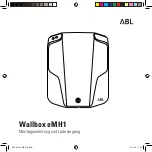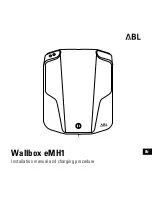
Brake Assist System (BAS)
The BAS is designed to optimize the vehicle’s braking
capability during emergency braking maneuvers. The
system detects an emergency braking situation by sens-
ing the rate and amount of brake application and then
applies optimum pressure to the brakes. This can help
reduce braking distances. The BAS complements the
Anti-Lock Brake System (ABS). Applying the brakes very
quickly results in the best BAS assistance. To receive the
benefit of the system, you must apply
continuous
brak-
ing pressure during the stopping sequence (do not
“pump” the brakes). Do not reduce brake pedal pressure
unless braking is no longer desired. Once the brake pedal
is released, the BAS is deactivated.
WARNING!
•
The Brake Assist System (BAS) cannot prevent the
natural laws of physics from acting on the vehicle,
nor can it increase the traction afforded by prevail-
ing road conditions.
•
The BAS cannot prevent collisions, including those
resulting from excessive speed in turns, driving on
very slippery surfaces, or hydroplaning.
•
The capabilities of a BAS-equipped vehicle must
never be exploited in a reckless or dangerous
manner which could jeopardize the user’s safety or
the safety of others.
Traction Control System (TCS)
This system monitors the amount of wheel spin of each of
the driven wheels. If wheel spin is detected, brake
pressure is applied to the slipping wheel(s) and engine
power is reduced to provide enhanced acceleration and
254
STARTING AND OPERATING
Summary of Contents for 500 2016
Page 4: ......
Page 8: ...6 INTRODUCTION...
Page 136: ......
Page 141: ...Lounge Instrument Cluster Sport Mode 4 UNDERSTANDING YOUR INSTRUMENT PANEL 139...
Page 142: ...Sport Instrument Cluster Base 140 UNDERSTANDING YOUR INSTRUMENT PANEL...
Page 143: ...Sport Instrument Cluster Sport Mode 4 UNDERSTANDING YOUR INSTRUMENT PANEL 141...
Page 144: ...Sport Turbo Instrument Cluster Base 142 UNDERSTANDING YOUR INSTRUMENT PANEL...
Page 145: ...Sport Turbo Instrument Cluster Sport Mode 4 UNDERSTANDING YOUR INSTRUMENT PANEL 143...
Page 223: ...Operating Tips Chart 4 UNDERSTANDING YOUR INSTRUMENT PANEL 221...
Page 224: ......
Page 274: ...272 STARTING AND OPERATING...
Page 348: ......
Page 412: ......
Page 413: ...MAINTENANCE SCHEDULES CONTENTS MAINTENANCE SCHEDULE 412 Maintenance Chart 414 8...
Page 420: ......
Page 431: ...INDEX 10...
















































